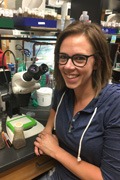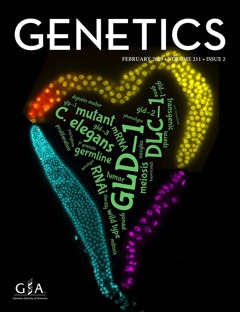What can we learn from worms? How the nematode C. elegans maintains balance in a changing environment
Author(s):
Maureen Munn, Jeffrey Shaver, Joan Griswold and Jessica Aronson Cook
Overview:
This 5-lesson curriculum module helps students build an understanding of how genes and environment interact to determine traits, by learning how the nematode C. elegans maintains homeostasis in an unfavorable environment caused by high osmotic stress. Intended for high school biology classes, students learn the importance of C. elegansas a model organism and perform an experiment in which they compare the activity of two nematode strains at high and low salt concentrations over a three-day period. Using their own observations, data from the scientific literature, a dialysis tubing model, and knowledge of how a mutation involving a single nucleotide can drive behavior change, students develop their own explanations based on evidence, and experience first-hand how an environmental factor affects the expression of a trait. Each lesson integrates the three dimensions of the Next Generation Science Standards (NGSS).
Genetics Concept(s) Addressed:
Molecular Biology of Gene Function: How is genetic information expressed so it affects an organism’s structure and function?
Gene Expression and Regulation: How can gene activity be altered in the absence of DNA changes?
Gene Expression and Regulation: How do genes and genomes control changes in an organism’s structure and function throughout its life cycle?
Genetic Variation: How do different types of mutations affect genes and the corresponding mRNAs and proteins?
Genetics of Model Organisms: How do the results of molecular genetic studies in model organisms help us understand aspects of human genetics and genetic diseases?
Methods and Tools in Genetics: What experimental methods are commonly used to analyze gene structure, gene expression, gene function, and genetic variants?
Core Competencies Addressed:
Students should be able to implement observational strategies to formulate a question.
Students should be able to gather and evaluate experimental evidence, including qualitative and quantitative data.
Students should be able to generate and interpret graphs displaying experimental results.
Students should be able to communicate experimental results effectively, including writing research papers and giving presentations.
Audience:
High school biology students; introductory undergraduate
Activity Type:
Laboratory exercise
Activity Length:
7 class periods of 50-90 minutes each
Keywords:
C. elegans, nematode, homestasis, gene-environment interaction
Citation:
Please refer to: https://gsoutreach.gs.washington.edu



